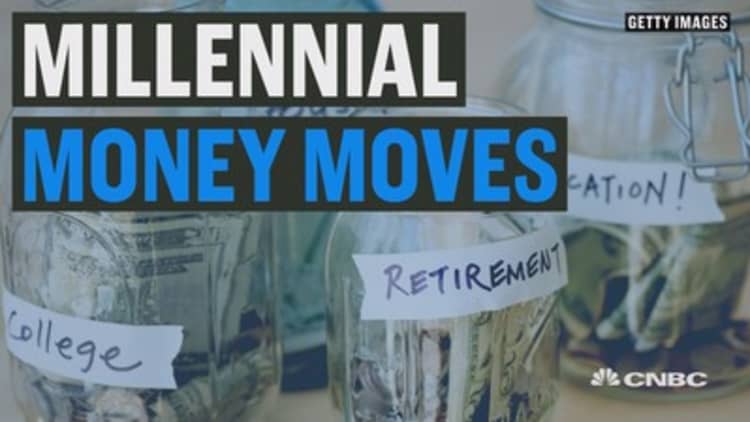Squeezing more money out of your boss might be as easy as reassessing your 401(k) contribution.
Even as workers set aside more for retirement, many are still missing out on free money in the form of matching contributions from their company.
"Would you like your employer to give you a raise?" asked Kevin Meehan, a certified financial planner and the regional president of Wealth Enhancement Group in Itasca, Illinois. "Well, here is a way to get it without having to ask, because your employer has already volunteered."
One in 5 workers isn't contributing enough to get the full match from his or her employer, according to data in a forthcoming report from benefits administrator Alight Solutions, which assessed behaviors of 3.5 million workers at 125 companies who are eligible to participate in their workplace plan. Fidelity, which crunched numbers for CNBC on 2.6 million participants in 6,295 plans, came up with the same figure.
Young workers and those with lower salaries are more apt to miss the match, but the trend persists even among those who are older or well compensated. (See charts below.)
A new analysis from Wells Fargo found that one-quarter of boomers aren't saving enough in their workplace retirement account to get the full match. For Gen Xers, it's 31 percent and millennials it's 37 percent. The bank analyzed habits from 4 million workers in more than 5,000 plans.
Employee savings by age
| Employee age | Below match threshold | At match threshold | Above match threshold |
|---|---|---|---|
| 20-29 | 29% | 38% | 34% |
| 30-39 | 25% | 34% | 41% |
| 40-49 | 21% | 29% | 50% |
| 50-59 | 16% | 25% | 58% |
| 60+ | 14% | 26% | 61% |
Source: SOURCE: Alight Solutions
Some of those workers are just shy of the mark.
Fidelity estimates that 20 percent of those missing out are only 1 percentage point below a full match. Wells Fargo puts the average value of the lost match at $750 per year. Over a career, even a small annual loss could amount to nearly $100,000 less in your retirement account.
"On first reaction people may say, 'That's not a lot,' but when you think about that over a 40-year period … it really adds up," said Joe Ready, executive vice president and director of Wells Fargo Institutional Retirement and Trust.
So why are workers leaving free money on the table? Experts say several factors might be at play, chief among them competing debts and goals for those paycheck dollars.
"A number of people just don't have the personal cash flow to make the contribution, period," Meehan said.
Employee savings by income
| Salary | Below match threshold | At match threshold | Above match threshold |
|---|---|---|---|
| $20,000-$39,000 | 35% | 35% | 30% |
| $40,000-$59,000 | 26% | 33% | 41% |
| $60,000-$79,000 | 20% | 31% | 50% |
| $80,000-$99,000 | 14% | 29% | 57% |
| $100,000+ | 8% | 22% | 69% |
Source: SOURCE: Alight Solutions
Consumers could also be missing out because they aren't aware of key plan details. About half of employer plans that automatically enroll eligible workers put them in at a contribution level below that of a full match, said Rob Austin, director of research at Alight Solutions. Many of those plans escalate contributions over time, but not all do.
Another miss: Some plans allow both pretax and Roth contributions, but match only pretax ones, Austin said.

Found money
If you can afford to contribute, there's no reason to leave that employer match on the table. Even if the match isn't particularly generous — say 25 cents on the dollar — "that is still a guaranteed 25 percent return on your investments right away," Austin said.
Here's how to make sure you're snagging all the free money available:
Confirm match details. "Double-check that you are getting the full amount," Austin said. That's something easy to confirm with a call or email to human resources or your plan administrator.
Reassess your budget. Do a personal inventory of your expenses to see where you could save money or cut back, said Ready. A recent Banktivity survey found that Americans waste an average $140 each month on things they don't necessarily need.
Create an escalation plan. If you can't afford to bump up contributions just yet, check to see if your plan allows you to schedule an increase or sign up for an annual increase program, Austin said. Time that to coincide with your next pay raise





